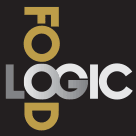Are you scratching your head at the end of the night because you had a full house and yet you’re just breaking even? Or are you looking for ways to increase the spend per diner to maximise revenue? Then you, my friend, need to tap into the wonder that is menu engineering.
Now there are many levels to this tool but today I’m going to keep it very simple. At its essence, all you need to know to get your menu working hard is the profit from each dish (take out your food cost, labour and other overheads) and how many diners are ordering it.
You want to have two numbers – the dish’s profit, and how often the dish was ordered in the past month/week/quarter to see how popular it is.
Next you need to sort the dishes into four categories, called Stars, Puzzles, Plough Horses and Dogs.
Stars: High profitability and high popularity – these are the winners of your menu.
Puzzles: Profitable dishes that aren’t as popular – can you promote them more, or tweak them to appeal to diners?
Plough Horses: Popular dishes that aren’t as profitable – how can you tweak them to lower the cost of goods? Or raise the price?
Dogs: Low in popularity and low in profitability – consider replacing these dishes on your menu.
For example, let’s say you had six dishes on your lunch menu:
• Chicken pesto penne, selling for $28 with $15 profit, ordered 100 times in past month
• Veal parmigiana, selling for $25 with $6 profit, ordered 50 times
• Prawn risotto, selling for $30 with $9 profit, ordered 200 times
• Spaghetti meatballs, selling for $25 with $8 profit, ordered 150 times
• Gnocchi with pumpkin and spinach, selling for $25 with $15 profit, ordered 180 times
• Chicken saltimbocca, selling for $30 with $12 profit, ordered 170 times.
For this exercise, ignore profit percentages. Sometimes the profit on a high-cost dish is low as a percentage, but high in dollar value, and vice versa.
If you rank these dishes in two lists for profitability and popularity, you’ll find that the Stars will be high on both lists (like the gnocchi), the Dogs will be low on both lists (like the veal), and the rest will be in the middle and can be designated Puzzles or Plough Horses.
How to interpret the results
The prawn risotto would be an example of a Plough Horse, very popular but lower in dollars contributed to your bottom line. Some restaurants would keep the dish unchanged, ensuring the diners stay happy and hoping they order sides, desserts and drinks to push the bill up higher.
But there are other options. Would the diners wear a price increase to boost the profit? Can your seafood supplier offer a cheaper prawn product? And/or supply them shelled to remove the labour costs of your chefs shelling them? Is it cheaper to make your own seafood stock?
Meanwhile the chicken penne is a Puzzle – it has a good profit margin but isn’t ordered very often. Is it because no one notices the dish on the menu? Ask your team to help solve the puzzle, whether it be suggesting the item to diners, or tasting the dish to see if it can be improved.
To maximise the benefits you need to reassess your entire menu on a regular basis. This is so worthwhile and keeps you in touch with your diners, your suppliers and your team. Get everyone on board so the Dogs don’t hang around, and see if you can convert those Plough Horses and Puzzles into Stars!
